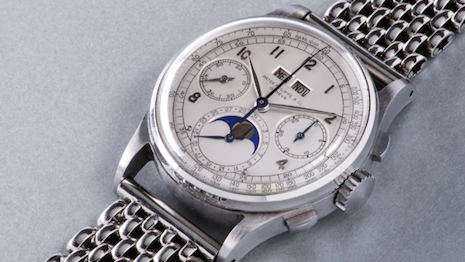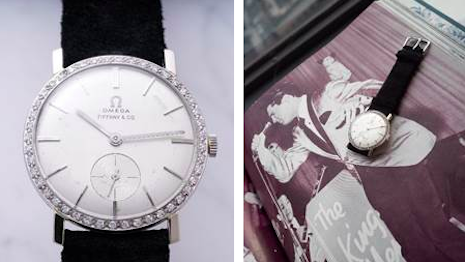- About
- Subscribe Now
- New York,
April 9, 2018

 Patek Phillipe sells watch for more than $12 million through Christie's. Image credit: Barnebys.
Patek Phillipe sells watch for more than $12 million through Christie's. Image credit: Barnebys.
After a stagnant few years in the watchmaking industry, younger men are supporting the sector by investing in high-value timepieces through auctions.
Similar to a fine wine or an expensive sports car, men ages 18 to 34 are finding more money to spend and getting in on the ground floor of investments with watches. According to findings from Barnebys, 90 percent of searches on its database are made by men in this age range, and searches by women are growing as well.
"At Barnebys we see a clear pattern emerging of a younger generation of men, with money to spend,” said Pontus Silfverstolpe, founder of Barnebys, Stockholm, Sweden. “First, they buy watch brands like Rolex, Omega and Patek Phillipe, then they buy a Porsche or Ferrari at auction while they fill the wine cellar with rare vintage wines and last but not least, the walls are filled with contemporary art.”
Watching industry growth
The online platform says that currently, the fascination with auctioned watches has not been this high since the Renaissance.
Young men are using watches as a gateway investment, before moving on to categories such as automobiles and wines.
Rolex is the most searched for brand on Barnebys’ database. Omega and Patek Phillipe follow behind at second and third, respectively.
 The white gold Rolex Cosmograph Daytona, reference 6265 will benefit Children's Action. Image courtesy of Phillips
The white gold Rolex Cosmograph Daytona, reference 6265 will benefit Children's Action. Image courtesy of Phillips
This renewed interest in the watch industry from young consumers, who are growing into their wealth, is a well-needed turn for the sector.
Now that women are interested in exclusive watches as well, the timepiece category is seeing a fervent bounce back.
Barnebys has noted that a Patek Phillipe piece broke a record with a sale of 9 million pounds, or $12.6 million at current exchange.
The Swiss watch industry in particular has been plagued with a series of setbacks such as smart watches' dominance with younger consumers.
 An iconic Elvis Presley's Omega watch goes for sale. Image credit: Phillips.
An iconic Elvis Presley's Omega watch goes for sale. Image credit: Phillips.
Barnebys' findings offer a relieved and hopeful look into the future, but the fate of the industry is still largely unknown.
Young consumers may be interested in watches as an investment, but these buyers are still significantly more interested in experiences rather than luxury goods. This means that once they come into money, they are more likely to spend on trips or experiential-related purchases.
Additional insight
According to the Federation of the Swiss Watch Industry’s monthly statistics, watch exports saw “timid” growth in December, but overall 2017 saw improvements.
During peak holiday shopping season, watch industry exports had weak growth in December despite a relatively low comparison base. In recent months the Swiss watch export statistics have been showing performance recovery, but the sector remains challenged overall (see more).
The Swiss watch industry also began 2018 on a positive note, with exports achieving double-digit growth year-over-year.
Further evidence of the timepiece sector’s turnaround, the value of Swiss watches exported in January was 1.6 billion francs, or about $1.7 billion at current exchange, up 12.6 percent from 2017. Following difficult times, the watch sector appears to be bouncing back, thanks partly to growth in Asia (see more).
"The leading watch brands like Patek Philippe, Vacheron Constantin, Breitling and Rolex are dependent on a prosperous secondary auction market,” Mr. Silfverstolpe said. “The auction market serves as a quality stamp, raising awareness and underpinning the history and marketing of the brands.
“Spending a million dollars on a wristwatch in a store feels undoubtedly more justified as a good investment if the secondary market is full of collectors who are prepared to put big sums on the perfect watch."
Share your thoughts. Click here